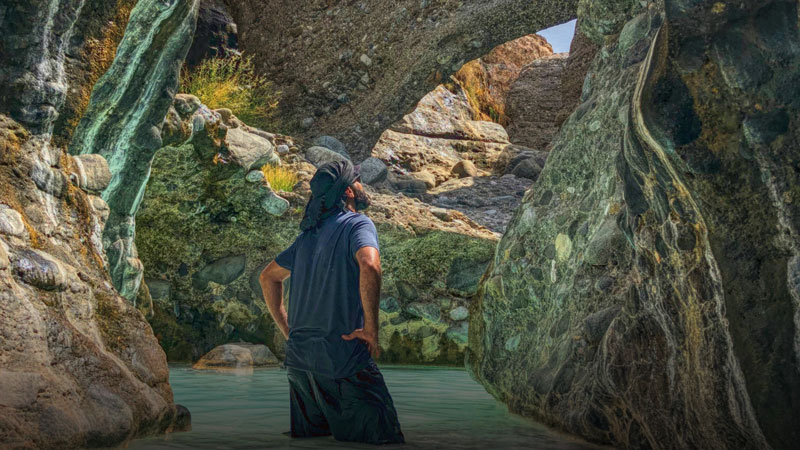


When one hears of Wadi al Hoqeen, a picture of a flowing man-made dam surrounded by lush vegetation always comes to mind. Even a quick search on Google yields different versions of this image that one would immediately assume that it’s only best visited after the rainy season when water abounds this place south of the Sultanate.
Located about two-hour drive from Muscat, there is actually something more to Al Hoqeen than its beautiful dam. On a hot summer day when the popular dam is all dried up, it still has other secrets and if one is not into outdoor adventure or trekking, then one will definitely miss the opportunity to appreciate the beauty that is quite not known to everyone yet.
Over the weekend, Oman Outdoor Adventure led by Ahmed al Jaabri contacted a local guide named Saif, a native of Rustaq. We met him once before having guided the team when it trekked Jabal Shams, the highest peak in the Sultanate.
He told us that far beyond the dam, about an hour’s trek was a warm river that never dries up. He described its water as all shades of blue and that the rocks, embraced by sulfur, has turned white.
With a team of nine people, all of us agreed that once this story is released, visitors will definitely come by the number.
Don’t be fooled
You know it’s Wadi Al Hoqeen because there’s a small park with a huge banner announcing the name of the place. The trek began with the stairs that led to the popular dam, now, water totally low if not reduced to a very small brook.
From the dried up dam a few metres away, the road opened up to date plantations with different seasonal crops sprouting below them.
Here, houses are spread far apart from each other and the fields start to get even wider.
Saif shared that the few trees we see lining the sides of the roads were henna trees and that the leaves are usually stripped off, dried out and then powdered so that they can be used for henna tattoos, a popular ornamental pigment for women.
The plantations in the area still have a strong 70s or 80s vibe to them with cars from that era, now totally obsolete, serving as a good backdrop for photos. While the areas where the aflaj is still working remains lush and green, the same cannot be said for what’s beyond the small village where most of the local farmers live.
After passing through the village, it was a long walk towards dying trees and brown fields. Under the 40-degree Celsius heat, it was a torture. No wonder not many people venture to this side of Al Hoqeen.
It was the singing of the water that caught our attention first. It was faint in the beginning but as we gotten closer and closer, it became a rumble — the sweet song of a flowing river.
The first thing that caught our eyes are the blue waters and running on top of white riverbed. It looked very handsome under a strong sunlight. From the cliff, we were all gushing why not much has been written about it.
We trekked further until we reach the area where we can get down from the cliff.
“We will be exploring the waters and see the canyon from below,” is what we were told.
Perspective is always important, and we were all thankful we got down the cliff and into the river.
A long stretch of beautiful
The water is tolerably warm. That’s the first thing that would come to mind once you start to immerse yourself in the water. It starts very shallow, the water barely reaching your knees.
Without any pathway, the waters are tricky. The rocks can sometimes be slippery and at other times jagged and challenging. Moving further into the canyon, the water becomes deeper.
There are numerous pools of varying sizes and the rock formations are totally distinct. But it was a world of its own and although not as grand as Wadi Shab and Wadi Bani Khalid, it definitely holds its own standard of beauty.
The longest lap is about 100 metres so for anyone planning to explore, one either has to be a good swimmer or must come along with life vests or floating devices.
For friends Hala and Ethar, they both gushed that they really like the place.
“It’s very different than the others we see. It has some very interesting features and who would expect that there’s actually more to Wadi al Hoqeen,” they said.
“The water is very inviting. After a long trek, it’s refreshing to see this long stretch of beautiful water and to fully immerse into it and swim, this could be the next favourite for many,” one of the team members shared.
Oman Observer is now on the WhatsApp channel. Click here



